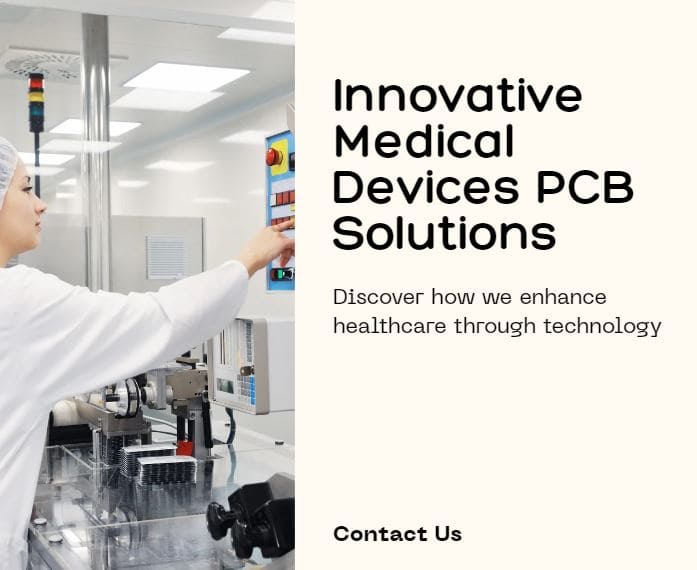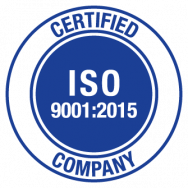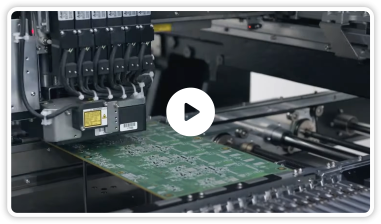Modern technology is the main driving force behind the medical industry. It propels practically all transformative breakthroughs. Cutting-edge technology integrates and helps healthcare systems to progress seamlessly. Whether it is diagnostic precision or therapeutic innovation, technology is the sole factor for the advancement. In turn, this revolution is due to the building block known in the electronic industry as the PCB or the Printed Circuit Board.At Rush PCB Inc., we manufacture PCBs for the medical industry, Thereby, we create a symbolic relationship between healthcare and technology. Our PCBs are critical components for medical equipment. They allow medical devices to function reliably. At the same time, they also ensure adequate safety for the patient. The medical industry uses our PCBs in high-stakes settings. That is why we adhere to global safety standards for our medical PCBs’ longevity, functions, and materials.

Where are Medical PCB Used?
Just as we do for many other industries, we make special PCBs for equipment that the medical industry uses. Our PCBs are a vital component of this equipment. Doctors in the medical industry use numerous devices daily to save the lives of their patients. For instance, some medical devices that use PCBs include:
- Thermometers
- Neurostimulators
- Blood Pressure Monitors
- Health Bands
- Pacemakers
- Cochlear Implants
- Handheld Monitors
Types of PCBs for the Medical Industry
At Rush PCB Inc., we make various PCBs for the medical industry. These include the broad category of PCBs like:
- These are stiff PCBs that do not bend. Most stand-alone and some portable medical equipment use these rigid PCBs.
- Flexible PCBs allow the medical device to adapt to the patient’s body curvature.
- These are a combination of rigid and flexible PCBs. The flexible part interconnects multiple rigid PCBs. This arrangement helps to make more compact medical devices without compromising their performance. Portable diagnostic equipment and implantable medical devices use rigid-flex PCBs.
- These are high-density interconnect PCBs. Their advanced construction allows packing many miniature components and interconnections into a small form factor. Although HDI PCBs help to create compact medical devices, they can maintain high performance. Health technology devices such as sensors and wearable devices typically use HDI PCBs.
Within the above broad categories, we make PCBs suitable for specific activities. These are:
- single layer of conductive material on a substrate. Suitable for simple and basic medical devices, these PCBs are cost-effective as well. These include devices such as simple sensors and temperature monitors.
- These boards consist of two conductive layers on both sides of a substrate. The two layers provide greater routing options, which allow for moderate complexity. Double-layer PCBs are commonly found in medical devices such as infusion pumps and ECG machines.
- These boards consist of alternate layers of substrates and conductive materials. Multiple conductive layers offer still higher routing density. Therefore, these boards are suitable for complex medical devices. Within a small form factor, they can hold many miniature components. This allows the PCB advanced functionalities. Multi-layer PCBs are common in many high-end diagnostic equipment, and medical devices like CT scanners, and MRI machines.
- These are boards requiring high mechanical stability and efficient heat dissipation. The presence of a metal core ensures both requirements are fulfilled. Metal core PCBs are common in medical devices that generate heat while operating. They offer adequate thermal management. Most power electronic devices and laser-based medical equipment use metal-core PCBs.
- These are special metal core PCBs using aluminum as the metal core. The presence of aluminum allows effective heat transfer and also keeps the weight on the low side. Thermal imaging equipment and LED-based medical lighting equipment tend to use aluminum-core PCBs.
- Some medical equipment operate at high voltages. Ceramic PCBs have excellent electrical insulation properties along with high thermal conductivity. Therefore, they are suitable for providing safe operation. Their high thermal conductivity helps with good thermal management even when the equipment is generating heat.
- Medical devices operating at high frequencies require excellent signal integrity. High-frequency PCBs are made of special material that prevents the degradation of signals at high frequencies. Most communication systems in the medical industry use high-frequency PCBs.
- Some wearables and medical implants must maintain prolonged contact with the human body and sometimes with bodily fluids. These devices must also meet stringent electrical requirements. For such devices, we integrate bioresorbable materials and coatings that improve the safety profile of the medical device.
Technology for Medical PCB
We use special technology for producing medical PCBs. These include:
- We use fine lines and spaces to increase the density of our PCBs. This reduces the form factor of our PCB while improving the routing. Using HDI technology lowers the cost of PCB fabrication.
- We use miniature components allowing a larger number to fit into a small space. Using surface mount components allows us to use automation in assembly and soldering. This is cost-effective and at the same time, enhances reliability.
- To achieve higher routing density, we place vias inside the pad. This allows 50% more space for component placement. We plug the via to prevent the solder from entering it during soldering.
- RoHS directives, we use only lead-free solder for assembling PCBs for the medical industry.
Compliance Requirements for Medical PCBs
Several global and national organizations monitor medical PCBs. They help in PCB standardization. This ensures PCBs meet the requirements of safety. All our PCBs and PCB assemblies conform to these requirements, regulations, and standards. Here is a brief overview:
IPC Regulations
All our medical PCBs and assemblies conform to the IPC regulations. These standards include:
- IPC-A-600, outlining conditions for acceptable circuit boards
- IPC-A-610, outlining the acceptability of electronic assemblies
- IPC-A-6012, outlining the performance and qualifications of rigid PCBs
ISO Regulations
PCB design and manufacturing. They offer guidelines for a detailed quality management system. We conform to:
- ISO 9001:2015, for quality requirements during PCB design, manufacturing, and assembly
- ISO 13485:2016, for an updated QMS for PCB manufacturers.
FDA Regulations
FDA or the Food and Drug Administration in the USA regulates medical devices. This includes those with PCB assemblies. We comply with the QSR or Quality System Regulation specified by the FDA. We conform to the comprehensive requirements for documentation, design control, and validation.
RoHS Compliance
The RoHS directive restricts us from using specific hazardous materials when we manufacture PCBs and assemble them for the medical industry. All our PCBs and processes comply with the RoHS directives.
UL Certification
We recognize and follow the certification from the Underwriters Laboratories. This certification signifies that our PCB manufacturing processes meet rigorous performance standards, and our PCB assembly techniques meet necessary safety standards. This enhances our credibility as manufacturers of medical PCBs.
Documentation and Traceability
We maintain excellent documentation and traceability of our PCB assembly processes. This includes records of the materials we are using and our testing procedures. We document the quality control measures we take. Therefore, we are transparent and accountable.
Risk Management
We identify and mitigate the potential risks from PCB assembly. For this, we minimize any failures or malfunctions. This is how we protect both patients and healthcare providers.
The medical industry demands non-negotiable compliance for PCBs and PCB assemblies. This way we ensure all our PCBs meet the highest standards of safety and quality.
Why Rush PCB Inc. for Medical PCBs?
We offer key benefits for our customers of medical PCBs. These include:
Customized Solutions
Medical devices often require unique designs. This is necessary for them to meet specific medical applications. At Rush PCB Inc., we assess these specific needs. We provide customized solutions tailored to the exact specification requirements. This allows our customers to optimize their equipment. Thereby, they can improve its performance and reliability.
Regulatory Compliance
The medical industry is highly regulated. There are stringent standards of quality and safety. We make sure that our design, manufacturing, and assembly processes always follow all relevant guidelines and meet all regulations. This is a crucial factor for our customers, as they must obtain the necessary approvals and certifications for their medical devices.
Design Optimization
We work closely with medical device manufacturers as our customers. This helps us understand their project better. Also, our customers provide us with valuable inputs during the design phase. This way we can optimize the layout, thereby minimizing PCB space requirements. The collaborative approach not only helps enhance signal integrity but also results in cost-effective and efficient design.
Quality Assurance
The consequences of medical PCB failures can be life-threatening. Therefore, we maintain our quality as paramount. Our engineers take complete responsibility for the PCBs we design, manufacture, and assemble. We have effective quality control measures in place at all stages of production and assembly. We also test the boards thoroughly after assembly. Thereby, we ensure our PCBs meet the highest standards of performance and reliability.
Risk Management
medical PCBs must be free from defects and highly reliable. Therefore, starting from the development stage, we conduct risk assessment studies. At the same time, we also implement adequate risk mitigation strategies. This helps us in locating issues early on and we can then address them effectively. This reduces the chances of failures later on.
Transparent Communication
Our projects are successful due to transparent communication between our customers and our engineers. We facilitate direct communication channels to our customers. This allows us to quickly resolve any query, change, and concern. Such collaborative approaches help us understand project requirements in a better way. It also helps in meet our goals more quickly.
Finally
If you are developing PCBs for your medical products, we are here to help you. We offer customized solutions and design optimizations. We help you with regulatory compliance. Our quality assurance, risk management, and transparent communication help to reach your goals quickly. Contact us today for a successful and safe integration of our PCBs into your critical medical device.
What type of substrates do you use for medical PCBs?
How do you make medical equipment immune to ESD?
We use:
- TVS diodes across I/P lines
- Series resistors for limiting incoming energy
- ESD coating like zinc whiskers
- High-pass filtering for attenuating transients
- Antistatic materials and proper grounding
- Shielding exposed connectors and cables
What standards apply to medical PCBs?
What is the role of ISO 13485 Quality Management in making medical PCBs?
It ensures continuous quality in:
- Infrastructure – utilities, ESD control, Clean rooms
- Process Control – Supplier management, ECOs, SOPs
- Traceability and documentation control
- Training records
- Risk management
- Quality Audits
Why do you require EMC for medical PCBs?









